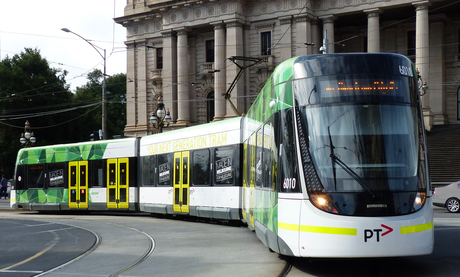Dispatch solution keeps Yarra Trams on track

Zetron Acom dispatch systems are providing futureproof functionality for the world’s largest tram network.
Yarra Trams has the largest tram network in the world, with more than 250 kilometres of double track and more than 200 million passenger trips each year. It takes considerable communication and coordination to ensure that its operations run with the precision and predictability required, which is why the company recently installed Zetron Acom integrated communications systems in its new unified operations centre (OC) and in its disaster recovery (DR) centre.
The Acom solution is not only able to support Yarra Trams’ current operations, but with its IP-based digital architecture and high configurability, it is fully capable of supporting the emerging technologies, updates and expansion that are all part of the company’s plans for the future.
“We’d been using an analog dispatch system to communicate with our trams via consoles and mobile portable radios,” said Darren Young, Yarra Trams’ operational control systems team manager. “But the system was approaching its end of life and could not be expanded or made futureproof.”
Another factor was that Yarra Trams wanted to consolidate several key operations in its new OC, so it needed a system that would be able to support a range of new and existing functions, including:
- Radio and telephone communications between tram drivers, field operators, and the OC.
- Automatic vehicle monitoring communications that transfer operational data between the trams and the OC.
- Power centre operators housed in the OC would use the system to manage electricity to the network.
- Customer service agents would use the system to communicate changes in tram services to customers.
- The rolling-stock team would use the system to manage routine and non-routine tram maintenance issues.
Rick Perks, Yarra Trams’ principal project manager for automatic vehicle monitoring and passenger information applications, said the company was looking for additional features.
“It would have to be efficient, cost effective, scalable and of mission-critical quality,” he said. “It would also have to be interoperable with other radio technologies and our existing transceivers. Finally, it would have to support our redundant disaster recovery centre, and the system in the DR would have to be configured to function exactly like the one in the OC.”
Yarra Trams initiated a competitive tender process in 2014. Zetron and several other dispatch system vendors responded, but Zetron and its Acom system were ultimately chosen for the project. “Zetron stood out for a number of reasons,” said Young. “Their proposal did the best job of addressing our requirements and provided a configurable console user interface. It also came with high-quality support and maintenance and an attractive project timeline.”
The solution settled on for Yarra Trams included:
- Two Acom systems — one installed at the primary data centre and one installed at the DR centre.
- 28 console positions — 16 at the new OC, 11 in the DR operations room that would replicate the consoles at the OC, and one administrator’s console in the maintenance facility.
- A trigger radio solution installed at the DR that would support 14 channels and provide backup for communication between consoles and radios.
Implementation
“First, we installed the core system at the DR site. Next, the primary Acom core was installed in the primary data centre, and the consoles were installed in the new OC,” said John Kitchen, Zetron Australasia project manager. “The old operations centre stayed up and running during this process, with all radio resources connected to both the new and the old systems.”
Once the final cutover date was set, the operators were moved to the new OC and started using the new console system. Finally, the share connections to the radios were removed, leaving only the Acom systems connected to the radios.
Yarra Trams’ Acom systems were designed to address the customer’s needs. For instance, they were configured to integrate with a unified communications platform so users would be able to make phone calls over the internet from their consoles. They were also integrated with existing equipment, including voice loggers, intercoms and radio transceivers.
In addition, to make the new equipment as easy as possible for the operators to learn, the console screens were configured to use the same radio-channel naming conventions utilised on Yarra Trams’ previous system.
The system has now been running successfully for just over a year.
“Our operators like the configurable, user-friendly console screens; the new instant-recall recorder; the monitor-chosen channels; and the intercom,” said Young. “I like the Acom’s IP architecture because it gives us the future-readiness we were seeking and will allow us to expand and upgrade easily when the time comes to support additional transceivers and digital radio technologies.”
Customised rugged tech shaping the next era of defence comms
Rugged computing platforms are becoming central to how armed forces protect communication...
A guide to aquatic survival this summer
While most Australians are planning aquatic adventures this summer, less than a third are...
Maher Terminals enhancing operations with private wireless
Maher Terminals chose the Nokia Edge platform because it needed a secure, reliable,...



